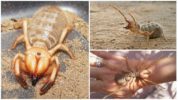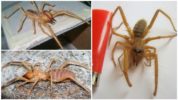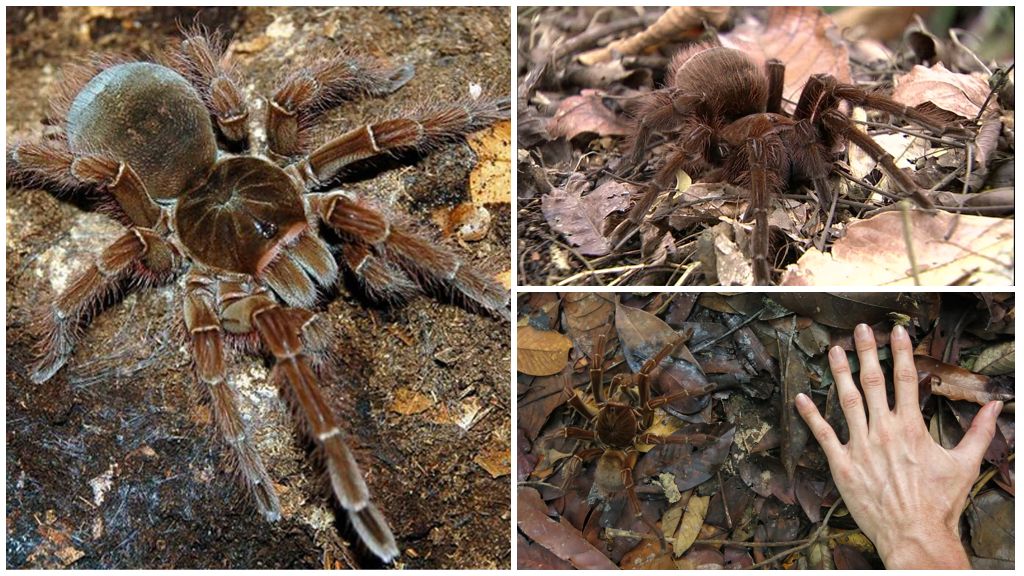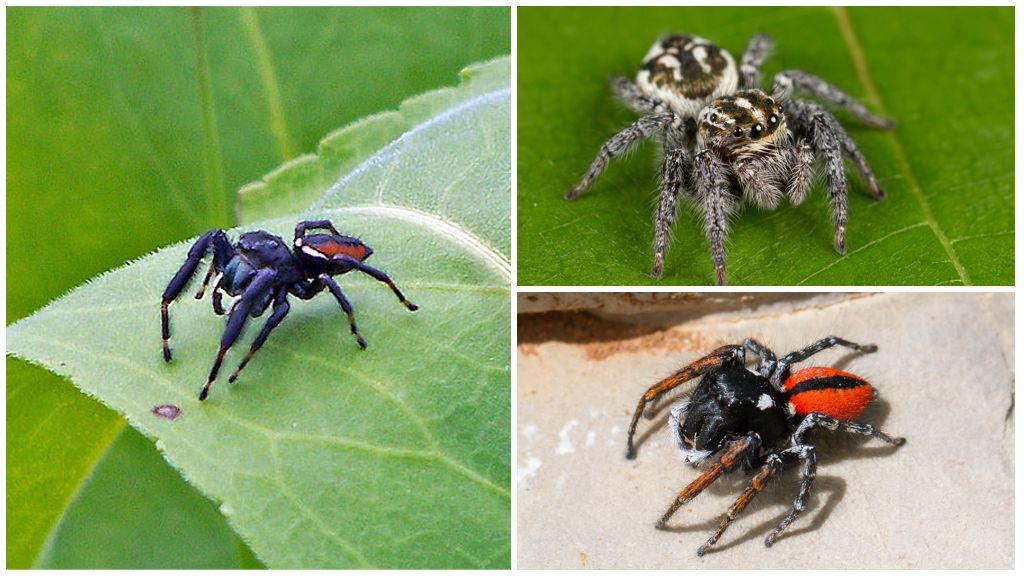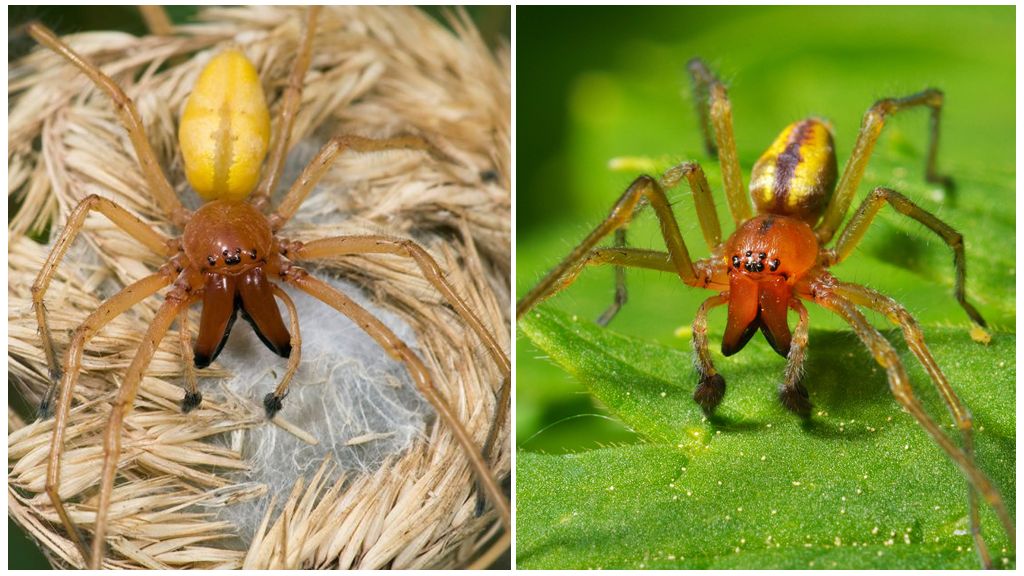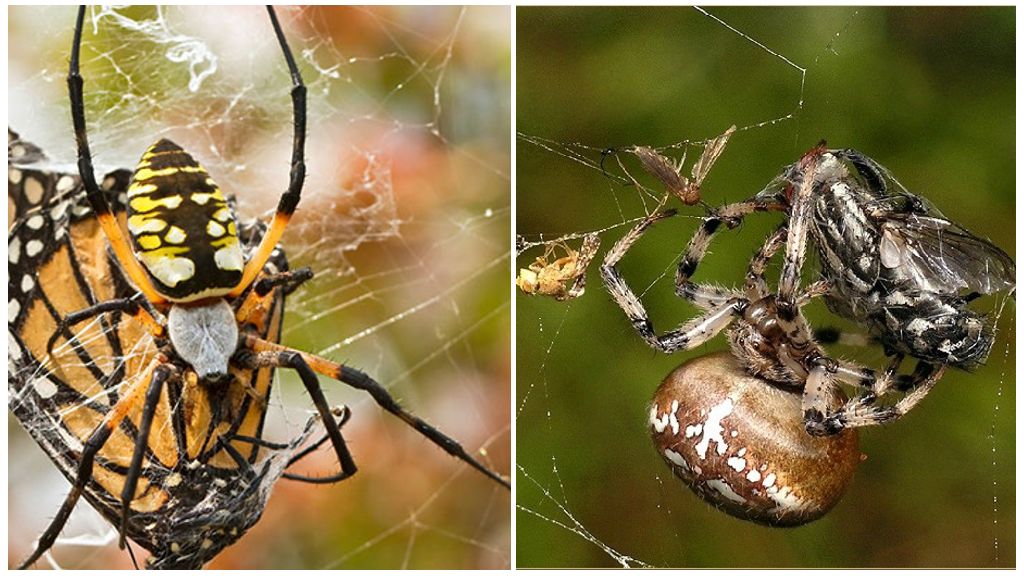- Camel spider (salpuga, phalanx spider)
- Camel spider (salpuga, phalanx spider)
A camel spider has several names - bihorch, phalanx, salpuga, wind scorpion, solar spider. In South Africa they are called hairdressers. Literally, Solifugae translates as "running away from the sun." The phalanx spider is different from species of arachnids. This class of arthropod was attributed to the presence of chelicerae, long limbs. Around the world, there are more than 1 thousand species of phalanges. They live in deserts, steppe, arid zones with high temperature.
Photo and description of the phalanx spider
Outwardly resembles a scorpion, spider, insect. A unique creature looks frightening, behaves aggressively, runs fast, jumps, has a dense shell. Such features make it virtually invulnerable.
A camel spider is a peculiar creature with a combination of primitive traits and signs of high development. The body consists of the abdomen, chest, head. Covered with durable carapace, long hairs. The abdomen is elongated, divided into several segments. The size of the bihorch is not more than 7 cm.
Long powerful limbs are attached to the chest, head. There are 8 legs in total, but long tentacles are very similar to another pair of paws, perform similar functions. The tentacles and powerful jaws on the head are directed forward, similar in shape to claws. Serve for grinding solid food. The hind legs are slightly longer. With their help, the Salpuga spider develops a great speed, and also jumps to a distance of 1 m.
The color of the bihorch resembles a scorpion. The abdomen is dark brown, closer to black. Head, claws orange, red. Chest, limbs are red or light brown. The hairs throughout the body are light. A photo of a camel spider is presented below. The color scheme varies depending on the type.
Interesting!
Eye device is different from spider organs - there are no simple eyes. Complicated eyes are placed in front, on the sides of the cephalothorax, instantly react to light, movement. This feature makes the salpugu an excellent hunter and invulnerable prey.
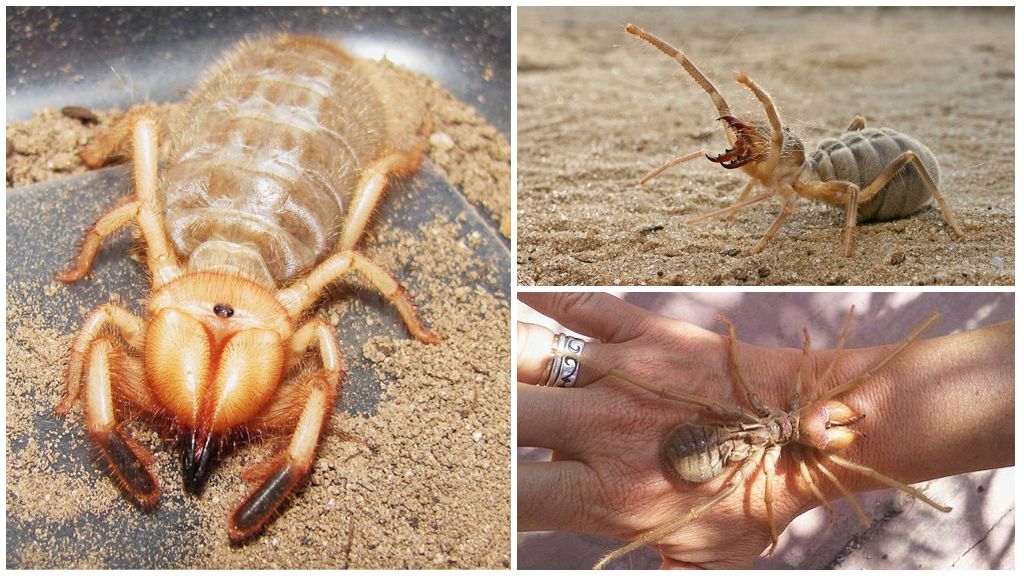
Habitat
A camel spider lives in desert, semi-desert regions, steppes. Prefers arid areas, high temperatures. Many species live in the Gobi desert, in the North Caucasus, Kazakhstan, Kyrgyzstan, in Astrakhan, Transcaucasia, the Lower Volga region, Volgograd. In Europe, found in Greece, Spain.
A camel spider digs holes in the soil, hides under stones, snags.
On a note!
Solpuga leads mainly a nocturnal lifestyle, but some species are active during the day and are not afraid of the sun's rays. Phalanxes are afraid of people, they try to quickly hide, but their carelessness often penetrate into the living room.
Behavior features
Salpugs are aggressive creatures. They attack absolutely everyone with whom they can handle. Their victims are often insects, spiders, caterpillars, as well as rodents, birds, lizards, snakes. Phalanxes fearlessly rush into battle with a scorpion, often win.
Salpugs wait for the victim in a secluded place, at its sight they occupy an awesome position - they lift the chest, pull the tentacles forward.
Interesting!
Phalanxes run at a speed of 16 km per hour, so it is very difficult to escape from such a predator.If necessary, the salpuga jumps in length to a distance of 1 m.
Nutrition
Extremely gluttonous fertilized females. If it is possible to defeat the rodent, it eats everything at a time. Powerful jaws tear apart the shell, gnaws inside. The murder weapon is claws, tentacles, powerful jaws. The spider does not inject poison, the victim does not paralyze.
The main diet is insects, bugs, spiders. Larger species attack chicks, rodents, lizards, frogs, toads, scorpions. The salpugs have practically no natural enemies. Power chelicera allows you to easily cut feathers, wool, cut through the skin, shell, crush thin bones.
On a note!
When attacked, the phalanges emit an unpleasant piercing squeak, chirping.
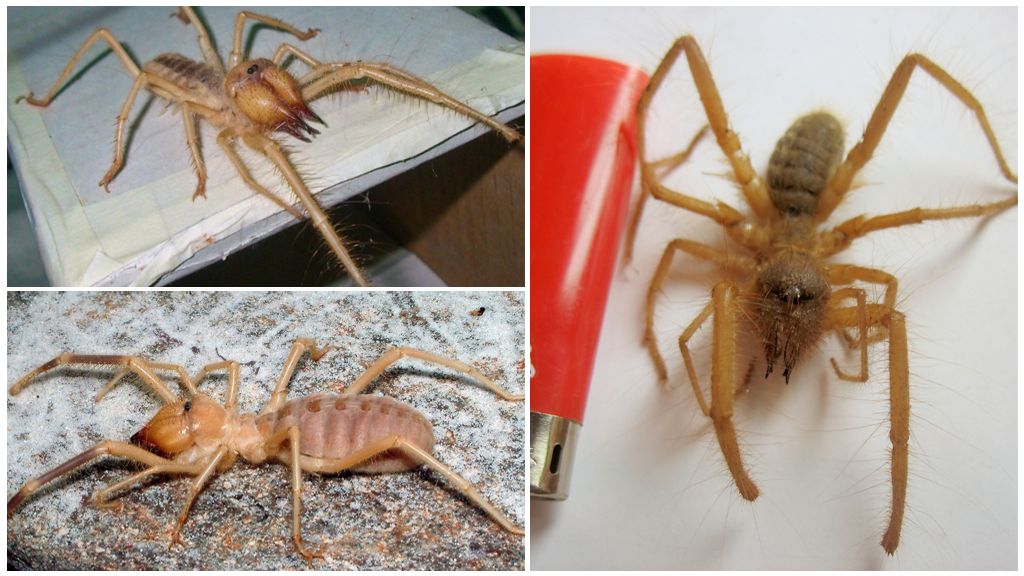
Pairing
Mating games take place at night. The female attracts males with a smell. Sperm fertilization. Before mating, the young female is so inert that the “boyfriend” has to drag her along. After fertilization, the phalanx becomes nimble. If the male does not have time to run away from her, he risks becoming a victim.
Embryo development begins inside the salpuga. After a while, the female lays eggs in a previously prepared mink. Young cubs are born with a thin chitinous cover, extremely vulnerable, motionless. Mother protects them until the first molt, brings food. After 2 weeks, the cubs fade, increase in size, acquire a characteristic color, the shell hardens.
How many young phalanges molt before growing up, how much later they live is not known for certain. An approximately adult individual lives 1 year.
Poisonous or not camel spider
Glands that produce a toxic substance, the salpugs do not. The phalanges are not poisonous, but they bite very painfully. People are attacked only in case of a threat to their own lives. Powerful jaws gnaw through the skin, leaving deep wounds. Bites, bruises, swelling, redness remain at the site of the bite. However, only large individuals are capable of such a “feat”, nothing remains of young salpugs on the body.
On a note!
Since claws often contain remnants of rotting food, the infection gets into the wound. After a few days, itching, suppuration, blisters appear. In order to avoid unpleasant consequences, the bite site must be immediately disinfected. In the presence of a secondary infection, the symptoms are eliminated by broad-spectrum antibiotics.
The solpug is attracted by the ultraviolet light of the lamp, so it often gets into the house, tent, outbuildings. It’s almost impossible to kill her. The predator runs fast, jumps well, has a strong carapace. The only way out is to expel. But first you should fill the pants in socks, put on gloves, take a broom or a stick.
Phalanx spiders are among the most unique animals on the planet. The order includes 13 families, 1 thousand species, 140 genera. For unknown reasons, they are not in the drylands of Australia.
